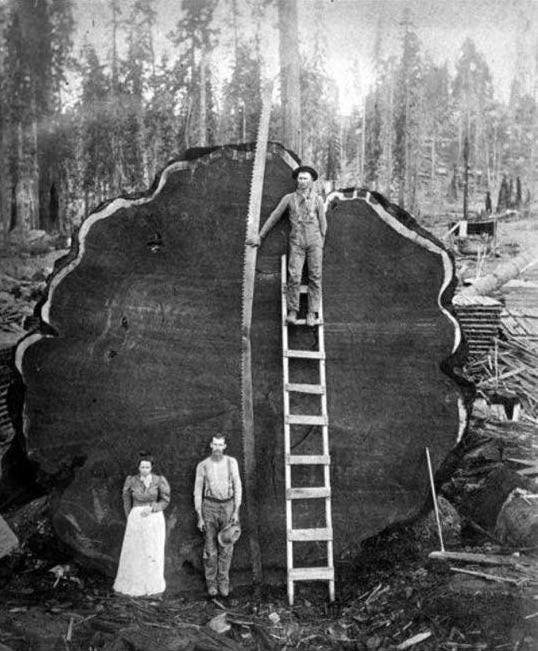As a custom homebuilder, I talk about wood more than the average guy. If it’s not this species versus that species, it’s the minutiae of different grain types, and whether they impart more of a modern or traditional aesthetic—I could go on here but I won’t—because lost in those nuances, it’s easy (as they say) to miss the forest for the trees.
Being consumed by the details of wood is to gloss over the fact that we’re discussing years of life visibly condensed into a single object. With those tree rings making up the grain, you have a literal record of the seasons, the droughts and the deluges, the good times and bad, a history of life so accurate that scientists have developed an entire field (dendrochronology) by using solely tree rings to recreate Earth’s past.
It’s worth pausing here to revisit a law from Physics 101: energy can neither be created nor destroyed, only converted from one form of energy to another.
Now, I’ve never been very good at the hard sciences—you’re looking at a degree in anthropology, right here—but this begs the question: what happens to all the energy that went into growing the tree once it dies? If there are 30, 50, 100+ years stored inside those tree rings, where does it all go in the end?
Considering it’s the sun which powers the growth of a tree, it seems to me there are two paths for this energy: 1) the long decay . . . rotting, or 2) the nuclear reaction . . . fire.
I think about the latter every time I throw a log onto a campfire—the years of sunshine being released at once—maybe that’s why you can stare at a fire for hours without getting bored. All those sunny days going back into the atmosphere is hard to ignore.
But this newsletter isn’t about physics. It’s about humans. So while the sun drives the growth of trees, and life in general, there’s another force of nature, equally universal, which allows our growth as individuals—time.
We harness time like the leaves harness light, using time itself to build our relationships, our expertise, and to craft our life into something of meaning. In the same way tree rings reveal years of growth, so do the layers of experience piled onto the things we value. And just like the energy of the sun, the time is stored there in our knowledge, waiting to be released.
Unlike the trees, of course, we have the free will to choose when and where our time energy is both collected and dispensed. Meaning we can always redirect our time toward something else if and when we see fit.
I balk at the line: “I don’t have enough time.” We’ve all got the same amount of time; some of us are simply more honest than others in how we choose to spend it. Barring circumstances of hardship, this is about priorities. And saying I don’t have enough time is just a disingenuous way of saying I’d rather spend my time elsewhere.
It may be cliché, but in the end, the greatest gift we can give anyone, including ourselves, is our time. What interests me, though, is not the way we must spend 10,000 hours practicing a skill to become a master (a la Malcolm Gladwell), but how we collect our time for the most meaningful and reactive release.
Certainly, some phones-down / undivided-attention with a friend over lunch, say, is time well-spent. But it’s also ephemeral, and I think there’s something to be said for gathering time into a single, tangible offering: a handwritten letter, or something you’ve made, and the more time it takes, the better.
A handwritten letter means more than a text or an email exactly because it takes more time to produce it. And on the backend, the effect of receiving such a thing lasts a whole lot longer. This must strike somewhere in the subconscious, almost beyond description, but I’d guess that now more than ever we can sense the difference between something done on the cheap versus something done with care.
I have a friend who makes custom furniture—and though we could talk about the reasons his craftsmanship and quality are far superior to something that arrives packed down in a box—I think you actually feel it when you sit down in a handmade chair. It radiates all that time that went into crafting it. Mass production can never check that subconscious box that handmade has.
And in the case of such a chair, you might feel some of that sunshine, too.
Here’s to time well spent.
-Martin
Before you go, I could use your help.
Routed is a one-man show. If you share Routed with your family / friends, it would mean the world to me. To sweeten the deal, I’ve got a few rewards set up if your people subscribe.
Thank you. I like you a lot.




My favorite one yet...I learned things, you made me think about things, and I felt things.